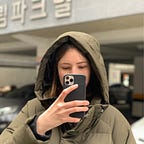04 | Micro UX: Midterm madness
Group members: Damul Yang, Moxue Jia, Giada Han and Maria Shuttleworth
<<< For my previous project on Micro UX, click here.
After the feedback from last week we decided to use TouchDesigner in a more subtle way: instead of recreating nature we observe we will simply enhance it with technology. I begun by altering the microscope pictures with a technique called “instancing” — making them real, and giving them depth.
We wanted to make these images interactive. I thought that one way of doing this would be to have the image change after you touch it somehow. The most effective version (pictured below on the right) was using a mouse, where the pattern would ripple away from clicks and drags.
However I struggled to use this technique with the instanced images, plus, just being able to interact with it using a mouse was not our intended outcome as it is quite limiting. So, we decided to instead focus on making the interaction part physical.
Finding meaning.
We thought about how to give more meaning to our patterns. We briefly considered UV light photography (UVIVF), with which we could observe sun damage; climate change has been depleting the ozone layer, which then increases UV radiation (Kataria et al., 2014) (Gabersčik et al., n.d). We wanted to see if we would be able to observe sun damage with this technique, highlighting the invisible impact of humans actions, and how it affects the microclimate in an unnoticeable way.
After some discussion we decided to instead emphasise the importance of a symbiotic relationship between humans and nature, and how an imbalance of needs in one affects the other.
We bought two new flowers with the aim of photographing them through the microscope, capturing both a dead and alive state. This was so we could compare them side by side and use this transition as a key part of the visuals later on.
Continuing with TD.
I combined these two effects with the image of the alive leaf, from the red flower (Begonia Nonstop Orange):
Which then became a full transition from alive to dead. Giada did the same, but with the petal and her own TD method.
Framing the presentation.
We decided to display our two microscopes side-by-side on a table: one showing a living leaf, the other dead. Above the microscopes on the wall we projected two video transitions of the cells dying and reviving on their own. At the moment the transition is completely unprovoked, so we planned on working in a triggering aspect next week.
This would allow participants to view the original cells first, and then compare what they see to our TD rendering.
Feedback.
We were met with praise, stating that we had come a long way since last week. The reason being that we did not overplay the TouchDesigner part, instead using it to enhance the real plant elements, which then linked back to the microscopes on display.
However, we needed to build up the human interaction aspect, and be clearer on the connection between humans & plants. John and Al agreed that we should think about the role of the participant in the experience to help us figure this out. Finally, we were encouraged to think about the context of the experience, and where could it live outside of the project.
>>> For my next project on Micro UX, click here.
References.
- LifePixel, n.d. UV Skin Sun Damage & Hyper Pigmentation. [online] Life Pixel Infrared Camera Conversions. Available at: <https://www.lifepixel.com/galleries/uv-ultraviolet-photography-gallery/uv-skin-sun-damage-hyper-pigmentation> [Accessed 13 May 2021].
- Kennard, D., n.d. Small Pansy flower in ultraviolet. [online] Davidkennardphotography.com. Available at: <https://www.davidkennardphotography.com/photos/3830-Small-Pansy-flower-in-ultraviolet.xhtml> [Accessed 13 May 2021].
- Schmitt, K., 2015. Amber Tree autumn leaf in reflected ultraviolet photography. [online] Photographyoftheinvisibleworld.blogspot.com. Available at: <http://photographyoftheinvisibleworld.blogspot.com/2015/12/amber-tree-autumn-leaf-in-reflected.html> [Accessed 13 May 2021].
- Kataria, S., Jajoo, A. and Guruprasad, K., 2014. Impact of increasing Ultraviolet-B (UV-B) radiation on photosynthetic processes. Journal of Photochemistry and Photobiology B: Biology, 137, pp.55–66.
- Gabersčik, A., Jansen, M. and Jones, A., n.d. UV and plants — UV4Plants Association. [online] Uv4plants.org. Available at: <https://www.uv4plants.org/publications/uv-and-plants/> [Accessed 13 May 2021].
